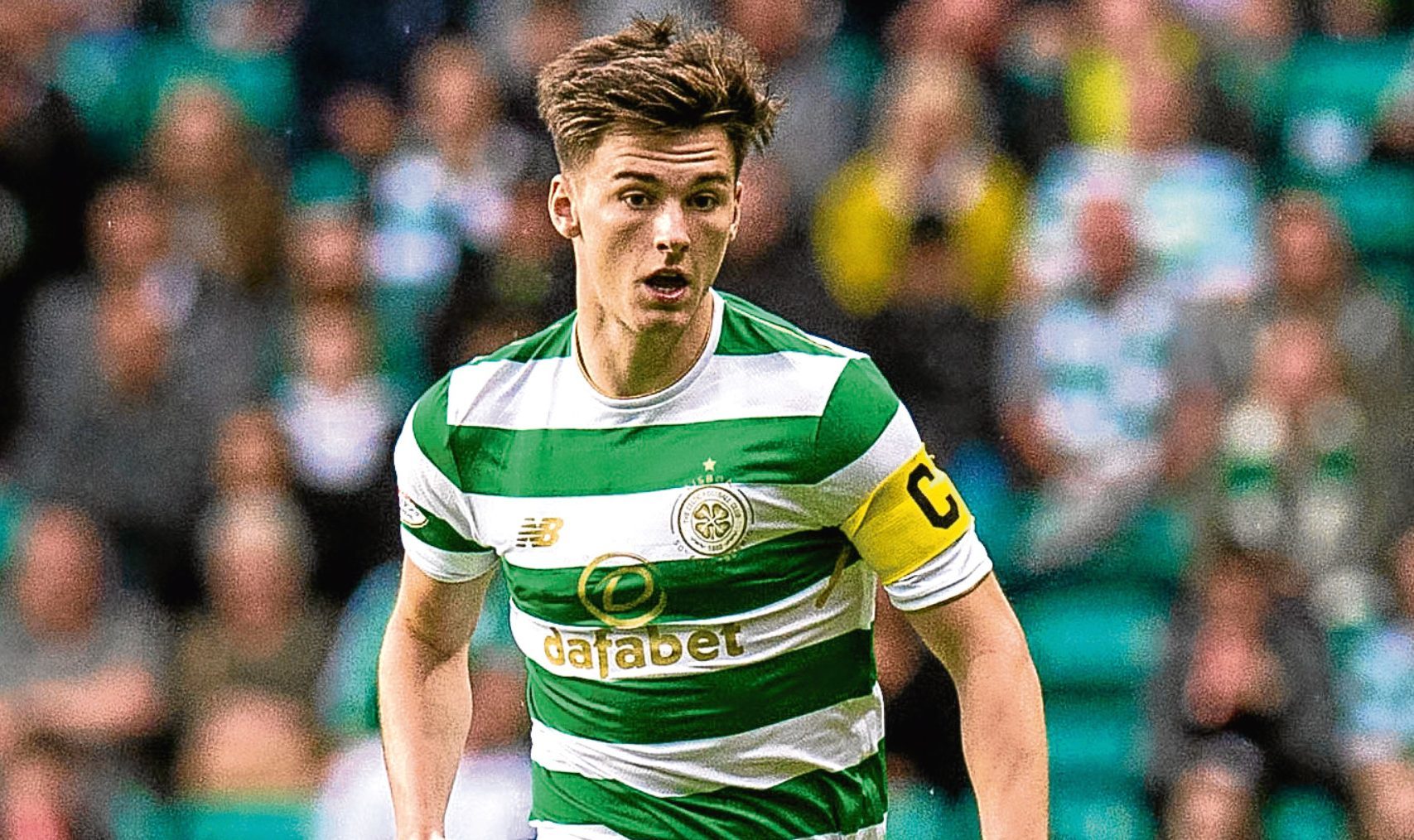
KIERAN TIERNEY’S meteoric rise at Celtic has seen the full-back draw comparisons with Danny McGrain and Paul McStay in their youth.
High praise indeed. Having played against both men I can testify they were talents for the ages.
Over the years, we have become all too used to young players getting lots of hype before it is merited.
In Tierney’s case, though, the talk is underpinned not by hope, but by fact.
Only just a couple of months out of his teens – he turned 20 in June – he has already won four Scotland caps plus both league (two) and Scottish Cup winners medals.
And on Wednesday, when he ran out with Celtic for the cup tie with Kilmarnock, he did so, in Scott Brown’s absence, as captain of the club he grew up supporting as a boy.
He is already top class.
What’s more, as his club manager Brendan Rodgers has said, he is only going to get better.
In fact, the young player he reminds me of is not from these shores but from Italy, Paolo Maldini.
I say that because of the way both became near-instant fixtures in their respective first teams after making the breakthrough.
Maldini was regular for Milan aged 17, Tierney likewise for Celtic at 18. So much so, in fact, that he ended up effectively ending Emilio Izaguirre’s time with the club.
There are similarities too in terms of versatility.
Maldini played a year for Milan at right-back before switching to left-back. He was also exceptionally good in the centre.
Tierney has played on the right for Scotland and was used in the middle by Celtic in midweek, as cover for the injured Erik Sviatchenko and Dedryck Boyata.
What is striking is not just that he is able to play in these positons, but that he thrives in them.
He is getting more and more confident all the time and physically stronger, too.
He will continue to fill out and his reading of the game is also likely to improve.
Everything we have heard about him points to a young man who is completely dedicated to becoming the best footballer he possibly can be, in terms of living the right way and constantly trying to improve.
Add it all up and you have a player who is surely destined, in good time, to play for one of England or Europe’s elite teams.
That should have a benefit, too, because he is a fantastic example to hold up to young kids coming through the system not only at Celtic, but at other Scottish clubs.
Work hard, the message will be, and this path is open to you, too.
Of course, Tierney is by no means the only positive role model available to young Scots players.
Look at his fellow Scotland internationalist, Andrew Robertson.
Released by Celtic at Under-15 level for being too small, he didn’t give up but worked his way up from Queen’s Park to Dundee United to Hull City and now on to Liverpool.
That really is a journey to celebrate.
What I also love is that these players are rewarding the managers who give youth a chance, at a time when managers of some of the very biggest teams clearly err on the side of caution.
Arsenal manager Arsene Wenger talked this week of wanting to play 20-year-old defenders, but said that doing so would cost him Premier League points.
I guess that might be true in the early days, but that is to ignore the potential long-termpay-offs these developing talents can bring.
When Brazil won the World Cup in 1958, they did so with the help of a 17-year-old.
His name was Pele.

Enjoy the convenience of having The Sunday Post delivered as a digital ePaper straight to your smartphone, tablet or computer.
Subscribe for only £5.49 a month and enjoy all the benefits of the printed paper as a digital replica.
Subscribe